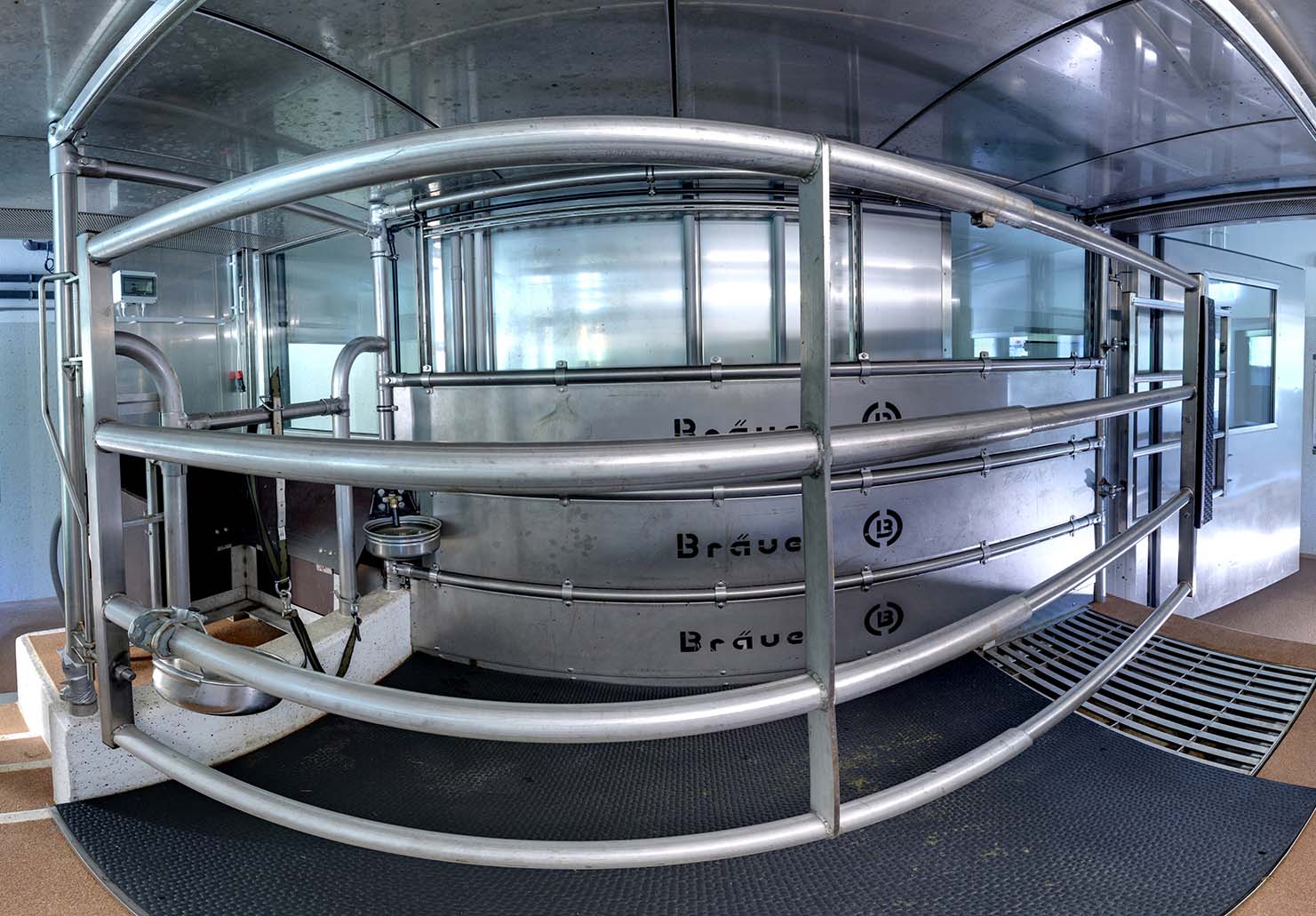Project goal
The focus of the film is methane emissions (CH 4 ) from ruminants, which are discussed in many social reports as a critical contribution to global warming. The article deals with the natural principles of digestion in ruminants and the measurement of gaseous emissions in the scientific facilities of the HBLFA Raumberg-Gumpenstein in a very informative form. The article fundamentally discusses the small contribution of CH 4 from enteric fermentation in the rumen and presents the results of a feeding trial aimed at reducing CH 4 emissions. The result was that by adding lemongrass, the amount of emissions could be reduced.
Why cows are not climate killers!
Thomas Guggenberger 1 , Georg Terler 1
To the film on Hello TV
Over 700,000 cows and their descendants use around 1.5 million hectares of agricultural land in Austria as a source of feed and have thus shaped the local cultural landscape together with our ancestors. In the less fertile regions of Austria, ruminants use this landscape as pasture in summer and are fed hay, grass and corn silage in winter. All of the basic feedstuffs mentioned are the result of photosynthesis in their plant communities. They provide the animals with dietary energy in the form of glucose and dietary protein in the form of simple N compounds. While glucose in starch form can be digested very well enzymatically, ruminants absolutely need the help of bacteria, fungi and protozoa to digest fiber carbohydrates. These live in symbiosis with the host animal in the ruminant's rumen, where they dissolve the stable chemical compounds in the plants (enteric fermentation) in order to create substances necessary for the host animal's survival. Substances that are not needed or used up are immediately or later excreted via different excretory routes, depending on the metabolic pathway.
How is methane produced in ruminant feeding?
being exhaled through the animals' lungs in the form of CO 2 Hydrogen released directly in the rumen, which would be toxic to the animal, is converted into methane gas (CH 4 ) by a certain group of bacteria and released through the mouth. The amount of CH 4 depends in direct proportion to the amount of feed and its quality. We can assume that the emission rate is between 2.0 and 2.2% of the ingested feed dry matter. Based on internationally recognized standards, the official body currently states an annual emission load of 164.71 kt CH 4 . A large livestock unit (500 kg live weight) therefore emits 114 kg of CH 4 from the rumen per year.
Classification of methane emissions from ruminants
Nobody would pay particular attention to this connection if the global economic growth of the last 100 years had not led to an increase in all potential greenhouse gases (GHG) in the atmosphere and thus triggered global warming. CH 4 is also a greenhouse gas and is included in the greenhouse gas balance at 28 times its amount. It is probably thanks to the sheer size of this factor that ruminants have been declared a climate killer. This cannot be explained rationally, as only 3.4% of global greenhouse gases come from the enteric fermentation of ruminants. This is less than the fossil CH 4 that escapes from the world's mining sites (4.6%) and less than is caused by our sewage treatment plants and waste storage facilities (3.6%) as a result of direct consumption. The global ruminant bashing, we unfortunately have to acknowledge, is today a corruption of individual errors in interpretation in many areas. Only one argument stands up to objective scrutiny: As the world population grows, the global livestock herd increases and thus becomes an expression of unbridled growth with an uncertain outcome!
However, the Austrian ruminant herd's enteric emission output corresponds to the level of 1890 and its CH 4 emissions have long since stopped contributing to the increase in greenhouse gas concentrations in the atmosphere. Expressed mathematically, this corresponds to a constant, figuratively speaking, to an “airplane that doesn’t fly!” As long as it is not yet possible for us to include the entire temporal development of sectors in the greenhouse gas balance, we will have to grudgingly take note of the annual balances in order to continue to educate people about the actual facts: ruminants are part of the basic equipment of many economies and theirs Existence is climate neutral as long as animal populations do not increase. That is the case in Austria.
How can Austrian agriculture contribute to climate protection?
Even if we in Austria are sure that we are not part of the problem, we still want to become as big a part of the solution as possible. This is important because in this country, apart from agriculture and forestry, no other sector can become a sink for the excess carbon in the atmosphere. With regard to the use of fossil energy, agriculture will follow society on its well-trodden path. Greenhouse gas from fertilization can be reduced through the use of fertilizer. A complete abandonment of imported feed from other continents will eliminate our liability for emissions resulting from land use changes and the following paths can be taken 4
-
Determination of herd size and feeding based on the feed available on the farm. This form of location-appropriate agriculture increases the importance and use of the company's own land and reduces the intensification tendencies based on purchased grain or protein crops in ruminants. This path can be pursued as long as national security of supply of dairy products and beef can be secured.
-
Breeding of long-lived animals with high yield potential from basic feed. This measure reduces the need for replacement and thus the herd size. Keeping animals appropriately promotes animal welfare and supports these goals.
-
Use of natural, secondary plant ingredients with a potential to reduce CH 4 emissions, taking into account the veterinary compatibility of their use.
-
Selection of ruminants with lower emission potential.
Implementation of the climate protection strategy
For a comprehensive implementation of this climate protection strategy in ruminant farming, both the national protein strategy and an accompanying market economy concept must be implemented. The first ensures a reasonable amount of essential protein, especially for pigs and poultry, and the second protects local farmers from being pushed out of the market by cheap food imports with a negative impact on the climate as a result of their efforts. Even if the global economy doesn't like to hear it: poor production standards inevitably lead to an international price premium. The level of punitive taxes must be assessed comprehensively using the means of ecological assessment. This not insignificant task is agriculture's most important task for climate policy in Austria and Europe.
1 Institute for Livestock Research of the HBLFA Raumberg-Gumpenstein, 8952 Irdning-Donnersbachtal
partner
We would like to thank Bilderfest GmbH, especially Rosmarie Bundz, for the detailed and easy-to-understand implementation of this complex topic!
Topic-related downloads
Five questions for assessing agricultural greenhouse gas emissions in Austria
team

Dr. Thomas Guggenberger, MSc
Head of the Institute for Livestock Research






